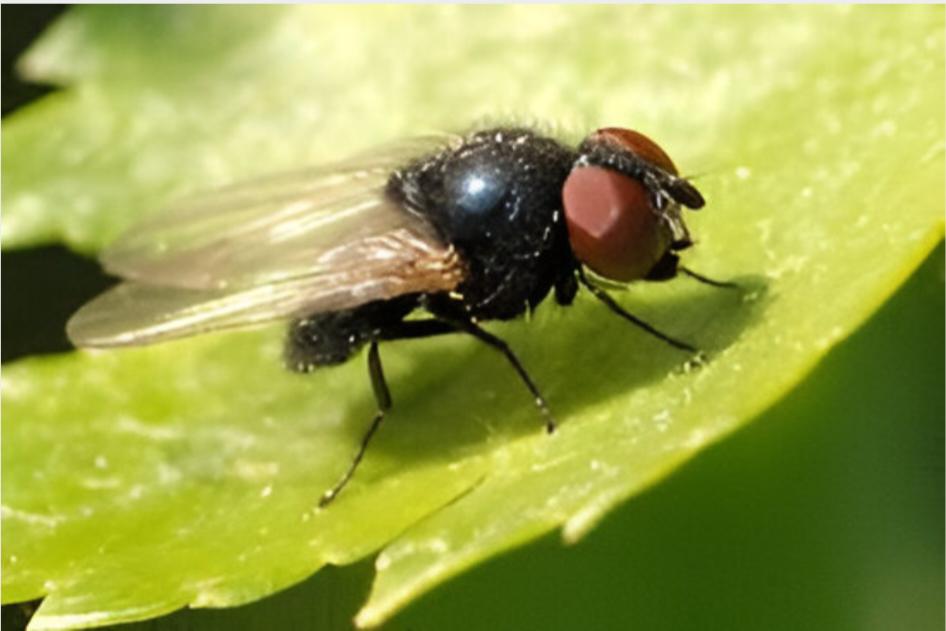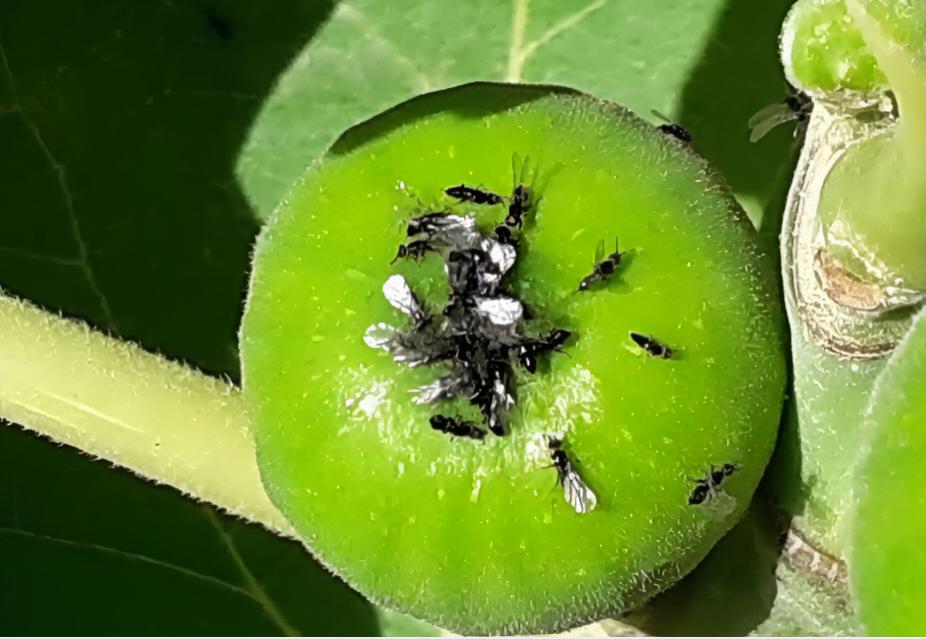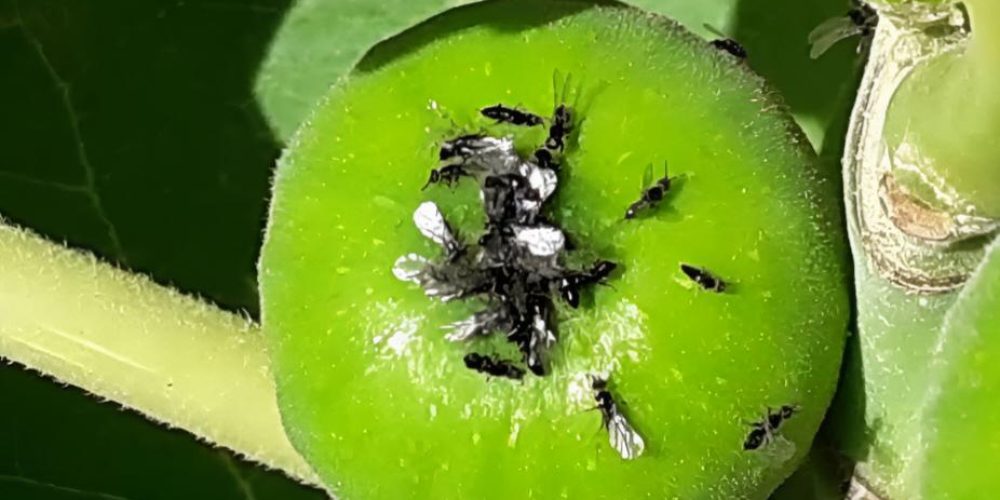Table of contents of the article
Toggle
The black fig fruit fly, Lonchaea aristella insect, is considered one of the dangerous agricultural pests for figs and its cultivation, especially as it weakens the trees and exposes them to attack by other insects and various agricultural pests. It also weakens crop production and the marketing value of the fruits. What are the signs of fig fruit fly infection, and how can the fly be combated? Fig fruits?
Fig fruit fly pest
In fact, the fig fruit fly is classified as one of the economic insects that infect all types of figs. However, this pest has also been called the black fig fly because it prefers the black type of fig. The pest is widespread in fig growing areas around the world, and is considered one of the most important pests in the Eastern Mediterranean countries, including Lebanon, Jordan, and Syria. The pest is also spreading in Africa, Asia, and Europe. The economic threshold actually estimated a decline in fig production once the infestation worsened. The decline may reach about 40-60% in tree productivity

Description of the fig fruit fly pest
General morphological description of the insect
In fact, the fig fruit fly is very similar to other types of flies, such as the Mediterranean fruit fly, for example. And the following:
The whole insect
The adult insect or fly is black in color, approximately 2-4 mm long. In addition, the black color is shiny with a blue tinge. The lower surface of the abdomen and eyes are brown, while the legs are black. While the wings are transparent and the veins are distinctive and light in color. The female has a long egg-laying apparatus.
Fig fruit fly larvae
The larvae are elongated and white in colour. The length of the larva when fully grown is about 7-8 mm.
Virgin
The pupa is usually hidden in cracks in the soil, or within plant tissue. The length of the pupa ranges between 3-4 mm, and it is reddish-brown in color.
Fig fruit fly infestation
The harmful stage of the fig fruit fly is the larvae, and this is because they naturally belong to the order Diptera. Most types of flies are harmed by larvae (for example, the olive fruit fly). The pest attacks fig fruits, preferring the black variety, as it is more susceptible to infection than other fig varieties. The larvae feed on the inside of the fruit and the pulp, then destroy the pulp and seeds. After that, the color of the affected fruit turns from green to brown due to its softening and deterioration. As the injury worsens, the site of the injury turns to a dull black color. The large fruits remain stuck on the branches and rot, while the small ones fall to the surface of the soil. The farmer may be able to see infected fruits starting in the summer months.
The danger of the fig fruit fly
The danger of the fig fruit fly stems from the fact that it weakens the tree’s overall productivity. In addition, it weakens the tree itself at the site of infection (fruits), which leads to the attraction of other pests. The most important pests that may be attracted are the Mediterranean fruit fly, the eastern red wasp Vespa orientalis, and drilling pests. In fact, with the presence of borer pests, scale insects and leafhoppers, and as the infestation worsens, the condition of fig trees deteriorates greatly. Also, in addition to the above, the farmer may have to apply integrated agricultural pest management.
Factors that encourage infection with the fig fruit fly
Of course, there are factors that encourage the fig fruit fly to infect fig trees. Among the most important factors:
Using parathenoid insecticides, which are not recommended, instead of using pesticides based on phosphorus compounds, which are recommended.
Cultivation of fig varieties susceptible to infection (the black variety), with an infection rate of 70-85%.
Also, not taking care of the general condition of fig trees
Life cycle of the fig fruit fly pest
The life cycle of the fig fruit fly is somewhat similar to the life cycle of fly species that appear in the summer. And the following:
1. The wintering phase of the fig fruit fly pest
The wintering stage is the pupal stage, and the pupa is usually hidden in cracks in the soil, or hidden in cracks on trees or in the corners of branches and leaves. The pupa is usually contained in clay cores in the soil at a depth of 5-8 cm. Virgos are preparing themselves to transform into complete insects.
2. The adult insect stage
Adult flies begin to appear starting in May or the summer months. The timing of appearance varies depending on location and environmental conditions. The adult insect feeds for some time on sugary substances available to it in the environment around it, and then mates.
3. Mating and laying eggs
After mating, the female lays about 2-4 eggs in each fig fruit, and this number may reach about 25-30 eggs in one compound fruit as the infection worsens. After that, the eggs hatch (after several days, or a month). In fact, egg hatching times vary depending on environmental conditions, such as temperature and humidity.
4. Behavior of fig fruit fly pest larvae
The larvae emerge from the hatched eggs and then begin feeding behavior. The larvae first begin feeding on the fleshy part of the fruit just under the peel. It is also rarely found in the center of the fruit. When growth is complete after two or three weeks, the larvae leave the fruits, then emerge through the exit hole, and drop themselves to the surface of the soil to transform into pupae.
5. Generations of the fig fruit fly
In fact, the number of generations varies depending on the environmental region and the prevailing conditions of temperature, humidity, and climate. Usually the duration of one generation in the spring is about 42 days, while in the summer it is about 20 days. The insect has 5-6 generations per year.
Fig fruit fly control
In order to combat the fig fruit fly, a number of preventive and remedial eradication measures are followed. The following is preventive control:
Preventive control is carried out by planting varieties that are less infected by this fly, such as the white variety, for example. The farmer also avoids planting the black variety, which is susceptible to infection, among other varieties and types of figs. In fact, it has been observed that the infection rate of the black variety alone is approximately 85% with aggravation, so the farmer is requested not to plant it from the beginning. In addition, glass or plastic traps are used. Pheromone or attractant traps may also be used. In the trap, the farmer uses a solution of 5% ammonium phosphate to catch the insect and determine when to use the pesticide.
Once a farmer notices the presence of 3-5 flies in one trap within a week or ten days, pesticide control is resorted to. The farmer can use phosphorus insecticides such as dimethoate or parathion-methyl. The pesticide dichlorovos can also be used at a rate of one spray every three weeks during the ripening season. In addition to the above, the farmer must collect the affected fruits and burn them completely at the same time as using the pesticide.
Thus; We have learned about the fig fruit fly, understood the factors that encourage its infection, and learned how dangerous an insect it can be if the infestation worsens and the farmer does not realize its danger. We have also learned about possible means of prevention and control. The farmer must be careful about his blessed fruit trees, so prevention must come before treatment.
In conclusion, we would like to note that we, at the world of plants website, offer you all the necessary services in the world of plants, we provide all farmers and those interested in plants with three main services::-
- Artificial intelligence consulting service to help you identify diseases that affect plants and how to deal with them.
- Blog about plants, plant diseases and care of various crops ... You are currently browsing one of her articles right now.
- An application that provides agricultural consultations to clients, as well as a service for imaging diseases and knowing their treatment for free – Click to download the Android version from Google Play Store، Click to download the IOS version from the Apple App Store.
Sources





1 Comment
Thank you kindly.